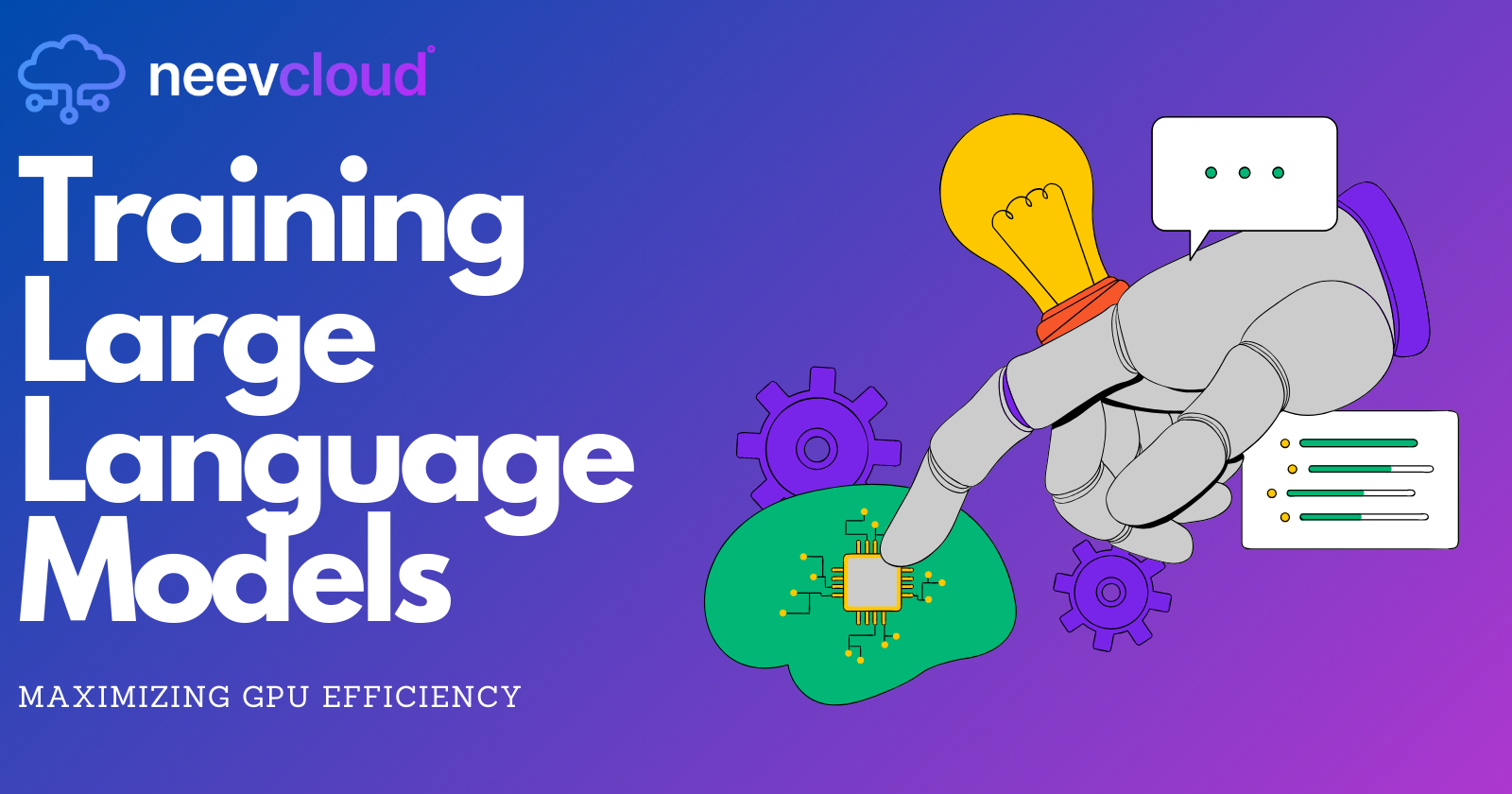Maximizing GPU Efficiency for Training Large Language Models
 Siddhant Jain
Siddhant Jain
In the rapidly evolving field of artificial intelligence, large language models (LLMs) are pushing the boundaries of what’s possible. Training these models requires immense computational resources, and GPUs (Graphics Processing Units) have become indispensable tools in this process. This blog will explore how GPUs enhance the efficiency of LLM training, the techniques involved, and how leveraging their power can lead to breakthroughs in AI.
1. The Role of GPUs in LLM Training
Parallel Processing Capabilities:
- Massive Parallelism: GPUs are designed to handle thousands of simultaneous computations, which is crucial for the matrix operations at the core of LLM training. This parallel processing ability significantly speeds up the training process compared to traditional CPUs.
High Throughput:
- Tensor Cores: Modern GPUs are equipped with tensor cores optimized for deep learning tasks. These cores accelerate matrix multiplications and other tensor operations, which are fundamental to training neural networks.
Memory Management:
- Efficient Utilization: GPUs offer high-bandwidth memory (such as HBM) that allows for faster data access and processing. This capability is essential for handling the large datasets and complex models used in LLM training.
2. Techniques for Efficient GPU Utilization
Distributed Training:
- Scaling Up: By distributing training across multiple GPUs or even multiple nodes in a cluster, large language models can be trained more efficiently. This approach allows for the parallel processing of data and model parameters, reducing overall training time.
Mixed Precision Training:
- Speed and Accuracy: Using mixed precision (e.g., FP16) instead of full precision (FP32) can enhance training speed and reduce memory usage without significantly compromising model accuracy. GPUs are particularly effective at performing mixed precision calculations.
Gradient Accumulation:
- Memory Efficiency: Gradient accumulation involves collecting gradients over several mini-batches before performing a weight update. This technique helps in training with larger batch sizes, which improves model performance and utilizes GPU memory more effectively.
3. Advanced GPU Techniques for LLM Training
Model Parallelism:
- Handling Large Models: For models that exceed the memory capacity of a single GPU, model parallelism splits the model across multiple GPUs. Each GPU processes a different part of the model, allowing for the training of larger and more complex networks.
Data Parallelism:
- Efficient Data Processing: Data parallelism involves replicating the model across multiple GPUs, with each GPU processing a different subset of the data. This approach speeds up training by allowing simultaneous updates to model parameters.
Dynamic Computation:
- Adaptive Processing: GPUs can support dynamic computation strategies, such as conditional computation, where only relevant parts of the model are activated based on input data. This can reduce the computational load and improve efficiency.
4. Recommended GPUs for LLM Training
| Feature | NVIDIA H100 | NVIDIA H200 | AMD MI300X | NVIDIA A100 | NVIDIA L40 |
| Architecture | Hopper | Hopper | CDNA 3.0 | Ampere | Ada Lovelace |
| Tensor Cores | Yes | Yes | Yes | Yes | Yes |
| Memory | 80 GB HBM3 | 96 GB HBM3 | 128 GB HBM3 | 40 GB HBM2 | 48 GB GDDR6 |
| Compute Power | 60 TFLOPS | 70 TFLOPS | 50 TFLOPS | 54 TFLOPS | 48 TFLOPS |
| Bandwidth | 1.8 TB/s | 2.0 TB/s | 1.6 TB/s | 1.6 TB/s | 1.2 TB/s |
| Precision Support | FP16, BF16, FP32, FP64 | FP16, BF16, FP32, FP64 | FP16, BF16, FP32, FP64 | FP16, BF16, FP32, FP64 | FP16, BF16, FP32 |
| CUDA Cores | 14,000 | 15,000 | 12,000 | 7,680 | 7,680 |
| Applications | LLMs, HPC, AI, ML | LLMs, HPC, AI, ML | LLMs, HPC, AI, ML | LLMs, HPC, AI, ML | LLMs, HPC, AI, ML |
| Key Advantage | Superior AI performance, advanced features | Enhanced performance, larger memory | High memory capacity, strong performance | Versatile, high efficiency | Advanced AI features, efficient performance |
Summary
NVIDIA H100 and H200: High Performance: Both GPUs offer exceptional performance for AI workloads, with the H200 providing slightly more memory and enhanced capabilities. Ideal for training cutting-edge LLMs.
AMD MI300X: Enhanced Capabilities: Known for its substantial memory and high performance, making it suitable for large-scale AI training and high-compute tasks.
NVIDIA A100: Powerful Compute: Versatile and efficient, the A100 is a workhorse for many AI and ML applications, providing a good balance between performance and memory.
NVIDIA L40: Advanced AI Features: Offers advanced AI features and is well-suited for various AI applications with efficient performance.
5. Real-World Examples of GPU-Enhanced Training
Transformers and BERT:
- Breakthrough Models: Training models like BERT and GPT-3 would be impractical without GPUs. These models rely on the computational power of GPUs to process large amounts of data and perform complex calculations quickly.
NLP Applications:
- Practical Implementations: In applications such as language translation, sentiment analysis, and text generation, GPUs enable the efficient training of models that handle vast amounts of data and produce high-quality results.
6. Future Trends and Innovations
Next-Generation GPUs:
- Advancements: As GPU technology continues to evolve, future models will offer even greater performance, memory, and efficiency. These advancements will further enhance the training capabilities for large language models.
AI Optimization Techniques:
- New Approaches: Emerging techniques and tools are continually being developed to make the most of GPU capabilities, including more sophisticated parallelism strategies and enhanced memory management.
Conclusion
GPUs have revolutionized the training of large language models, offering unparalleled computational power, efficiency, and speed. By leveraging advanced techniques and optimizing GPU usage, researchers and developers can accelerate the development of cutting-edge AI models and push the boundaries of what’s possible. As technology continues to advance, GPUs will remain a cornerstone in the quest for more powerful and efficient AI systems.
Subscribe to my newsletter
Read articles from Siddhant Jain directly inside your inbox. Subscribe to the newsletter, and don't miss out.
Written by
